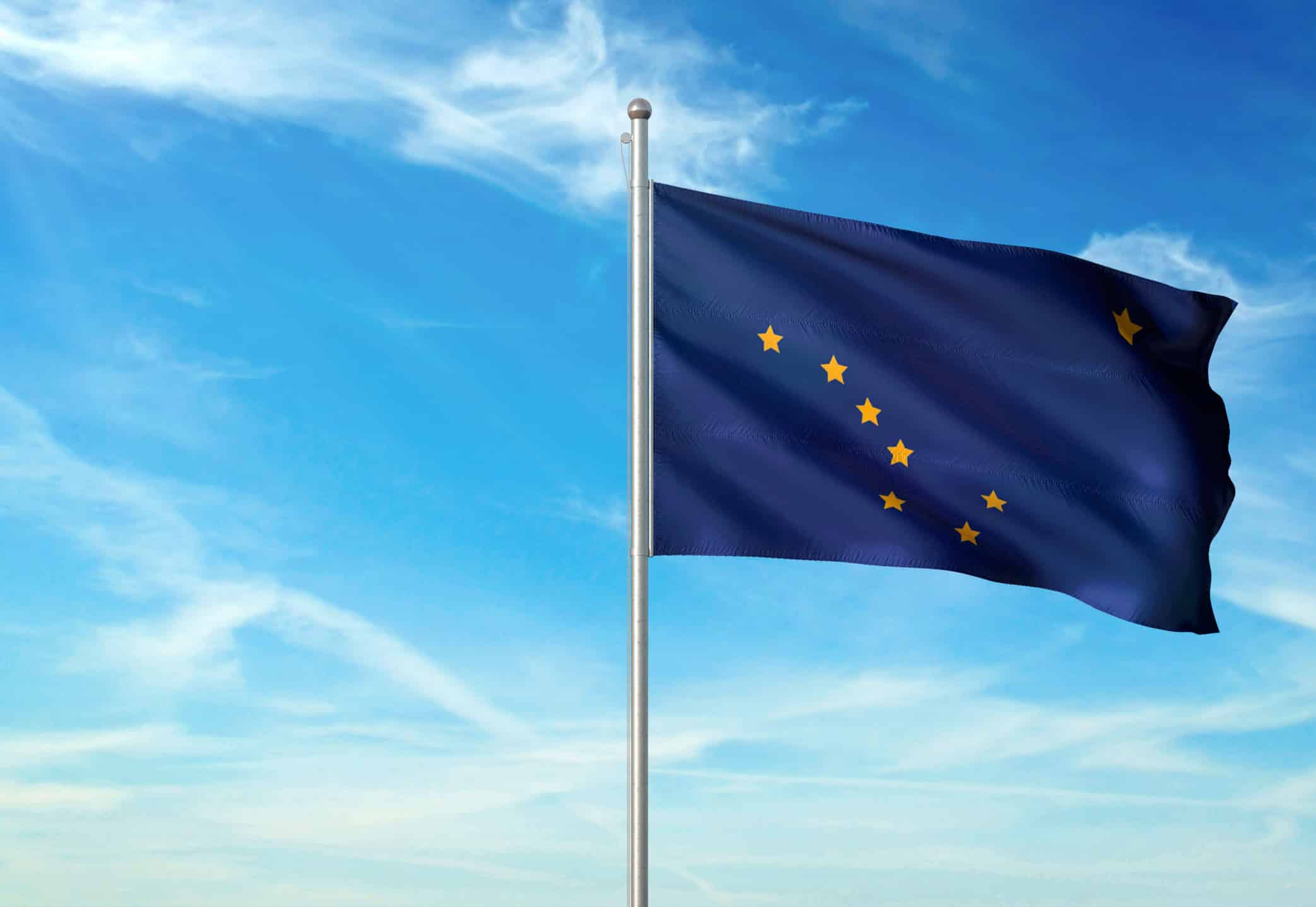Introduction
Alaska is a beautiful state known for its natural landscapes, wildlife, and varying climate. Millions of people flock to Alaska each year to hike through its incredible parks and explore its cities. While the population of Alaska is small, the size of the state is huge! In fact, Alaska is around 2.5 times larger than the state of Texas, which is the largest state in the continental United States. Discover the size of Alaska and find out how it compares to other large states.
Background on Alaska
Alaska was admitted into the United States as the 49th state in 1959. Before its admittance, though, the United States government had owned the territory for 92 years. In 1867, the United States bought Alaska from Russia, and the new territory was critically called “Seward’s Folly” because many people believed that Alaska was a desolate land with no value. However, gold was discovered in the state during the 1890s, and people flocked to the region, hoping to become rich.
Alaska is one of two states that are not directly connected to the continental United States. The other state is Hawaii, which is an island chain in the Pacific Ocean. While Hawaii has a tropical climate characterized by beaches and marine life, Alaska lies much further north, making it colder with harsh, frigid winters.
Alaska is also a peninsula and holds the title of the largest peninsula in the Western Hemisphere. However, portions of Alaska, such as the Aleutian Islands, exist in the Eastern Hemisphere. Regions that border the state include the Arctic Ocean, the Pacific Ocean, the Gulf of Alaska, parts of Canada, and more.
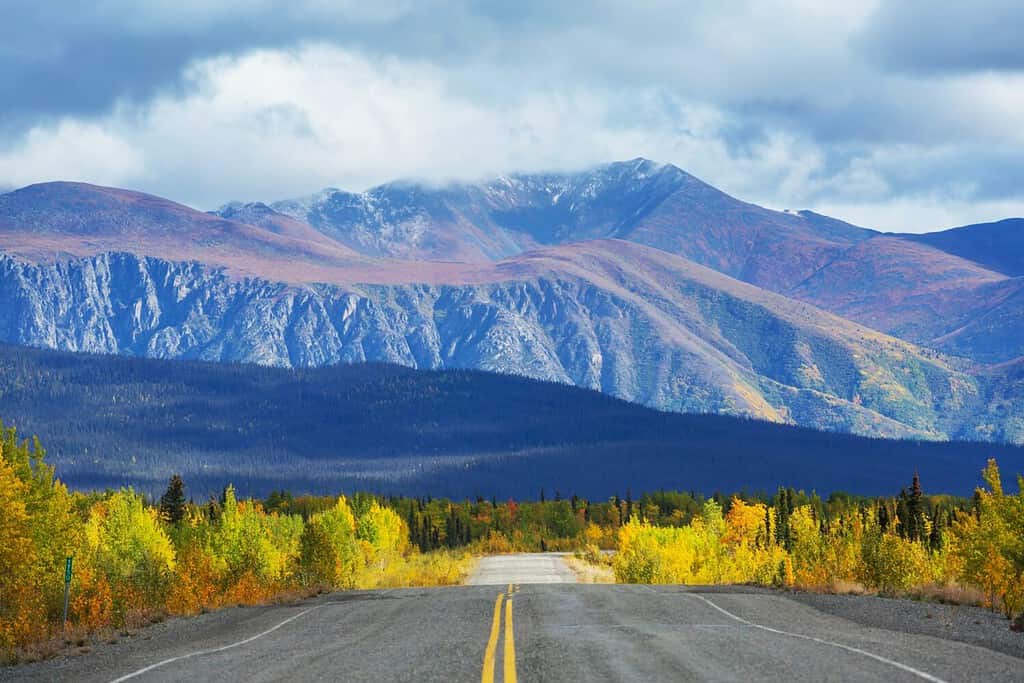
Alaska’s landscape is stunning and one-of-a-kind.
©Galyna Andrushko/Shutterstock.com
Climate of Alaska
The climate of Alaska varies according to ocean currents around the peninsula. For instance, warm waters from the Pacific Ocean meet cold waters from the Bering Sea, resulting in a phenomenon called the Aleutian low. The Aleutian low is an atmospheric low-pressure center near the Aleutian Islands. The Aleutian low results in ample storm activity around the state.
Due to its incredible size, Alaska is divided into several climatic regions. The Aleutian Islands and Southeast Alaska form the first region, which sees summer temperatures averaging between 40ºF and 60ºF. During winter, temperatures range from 20ºF to 40ºF. Interior Alaska is the second climatic region, characterized by summer temperatures between 45ºF and 75ºF and winter temperatures between -10ºF and 20ºF.
The coast of the Bering Sea and surrounding islands make up a third climatic region, which experiences temperatures ranging from 40ºF to 60ºF in summer and between 10ºF and 20ºF in winter. The final climatic region of Alaska is the Arctic coastal lowland, which experiences weather conditions determined by the Beaufort Sea. During summer, temperatures in the Arctic coastal lowland range from 35ºF to 55ºF. In winter, temperatures lie between -20ºF and -5ºF.
Furthermore, precipitation experienced by Alaska varies according to region. The Aleutian Islands and Southeast Alaska see between 60 and 160 inches of rainfall annually. In addition, the interior may experience intense thunderstorms, which are especially prevalent during summer. Near the Bering Sea, storms are also common and may cause natural disasters like flooding and blizzards. Finally, the Arctic coastal lowland only sees between five and 10 inches of precipitation every year, and this precipitation usually takes the form of snow.
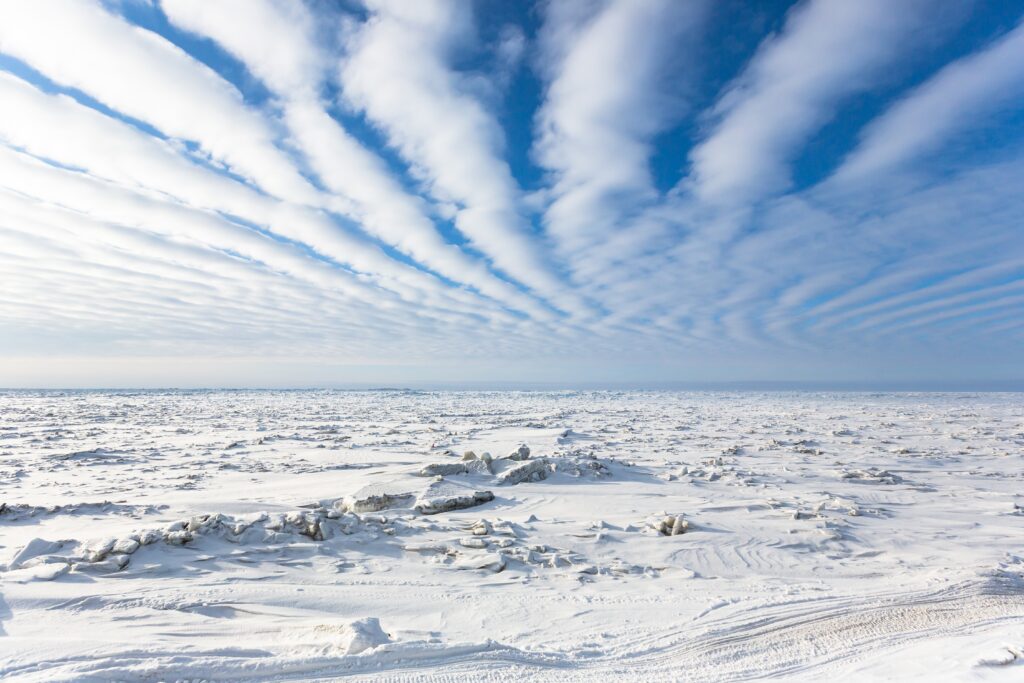
The Arctic Circle in Alaska is covered in ice and snow.
©iStock.com/Wirestock
How Big is the State of Alaska in Square Miles, Square Kilometers, and Acres?
Alaska is the largest state in the United States, covering an incredible 665,384 square miles. The area of Alaska translates to 1,723,337 square kilometers. In addition, the state’s size spans 425,845,760 acres. The only other state that comes close to rivaling Alaska in size is Texas. Even then, the square mileage of Texas only accounts for around 40% of the square mileage of Alaska.
Population and GDP of Alaska
The population of Alaska numbers 732,673 residents. While Alaska is not the least populous state in the nation, its population is smaller than most other states. In addition, the Gross Domestic Product (GDP) of Alaska is 49.63 billion U.S. dollars. Alaska has the third-lowest GDP in the country. By comparison, the GDP of the second-largest state, Texas, is 2.4 trillion U.S. dollars.
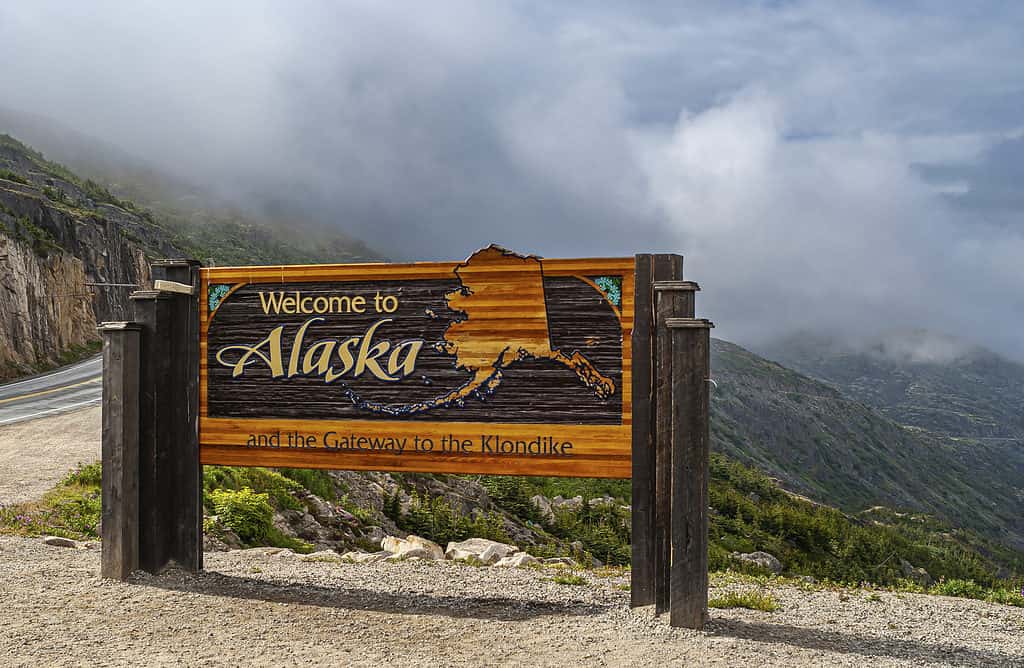
Alaska is the largest state in the United States, but it has one of the smallest populations.
©iStock.com/ClaudineVM
Alaska vs. Other Large States: A Comparison
| State and Ranking | Area (mi2) | Area (km2) | Acreage | Population | GDP (U.S. dollars) |
|---|---|---|---|---|---|
| Alaska (1st) | 665,384 | 1,723,337 | 425,845,760 | 732,673 | 49.63 billion |
| Texas (2nd) | 268,597 | 695,663 | 171,902,080 | 29.53 million | 2.4 trillion |
| California (3rd) | 163,695 | 423,968 | 104,764,800 | 39.24 million | 3.7 trillion |
| Montana (4th) | 147,040 | 380,832 | 94,105,600 | 1.10 million | 49.75 billion |
| New Mexico (5th) | 121,590 | 314,917 | 77,817,600 | 2.12 million | 94.66 billion |
| Arizona (6th) | 113,990 | 295,233 | 72,953,600 | 7.28 million | 356.42 billion |
| Nevada (7th) | 110,572 | 286,380 | 70,766,080 | 3.14 million | 165.46 billion |
| Colorado (8th) | 104,094 | 269,602 | 66,620,160 | 5.81 million | 385.83 billion |
| Oregon (9th) | 98,379 | 254,798 | 62,961,920 | 4.25 million | 234.81 billion |
| Wyoming (10th) | 97,813 | 253,335 | 62,600,320 | 578,803 | 36.35 billion |
Wildlife in Alaska
Alaska is full of amazing animals that make the region unique. For instance, the polar bear is native to the Arctic region of Alaska. To stay warm in Alaska’s freezing landscape, the black skin beneath a polar bear’s white fur absorbs sunlight. Furthermore, a thick layer of fat under the polar bear’s skin insulates the animal from the cold. Polar bears may weigh between 900 and 1,600 pounds, but females typically weigh less than their male counterparts. In addition, the length of a polar bear lies between 7.2 and 8.2 feet, and their height averages 5.3 feet on four legs and up to 10 feet on their hind legs. Finally, the paws of a polar bear are around 12 inches wide!
The moose is another mammal native to Alaska. As the largest member of the deer family, moose can appear intimidating. Moose may weigh between 660 and 1,300 pounds, and their height ranges from 4.9 to nearly seven feet! The coloration of moose is typically black or dark brown. In addition, the most striking feature of the animal is its incredible antlers. Moose antlers are flat and extremely wide, measuring between four and five feet in width.
In addition, various bird species fly throughout Alaskan skies. Some birds are the bald eagle, Canada goose, and Black-footed albatross. One interesting fact about the bald eagle is that it records its highest population numbers in Alaska, compared to other states. The bald eagle population in Alaska numbers approximately 30,000 individuals. Furthermore, fish species in Alaska include Pacific halibut, walleye pollock, and rainbow trout. Rainbow trout in Alaska typically begin their life in freshwater sources and move into coastal marine waters once they mature.

Bald eagle populations are highest in Alaska, numbering around 30,000 birds.
©iStock.com/Kandfoto
Large Cities in Alaska
The three largest cities in Alaska are Anchorage, Fairbanks, and Juneau with populations of 292,545; 33,018; and 32,240; respectively. Tourism, natural resource extraction, and defense projects support the economy of Anchorage, Alaska. Anchorage also features many attractions, such as national parks, skiing, museums, zoos, universities, wildlife sanctuaries, and sled dog races. In fact, the Iditarod Trail Sled Dog Race occurs annually in Anchorage and ends in Nome, Alaska.
The city of Fairbanks, Alaska was established in 1902 and named after a senator from Indiana, Charles Warren Fairbanks. While Fairbanks was once the largest city in the state, Anchorage grew more populated over time and surpassed Fairbanks. The main industries that support the economy of Fairbanks are tourism, oil, mining, timber, and the fur trade. Some attractions in Fairbanks are universities, museums, national parks, and events like marathons and sled dog races.
Finally, Juneau, Alaska, though the least populous of the three main cities, is the capital of the state. Around 40% of the workforce in Juneau is employed by the government, which is the main supporter of the city’s economy. Some other industries in Juneau are forestry, tourism, and fishing. Furthermore, attractions in Juneau include kayaking, skiing, whale watching, and dog sledding. The city also features many surrounding national parks, such as Glacier Bay National Park and Preserve and Tongass National Forest.
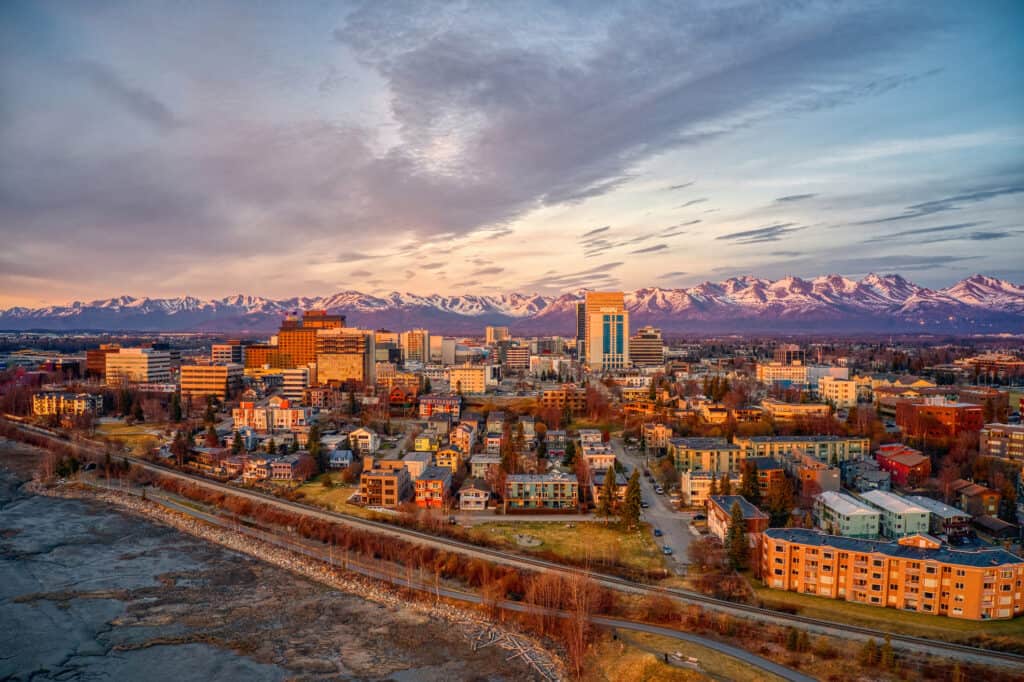
Anchorage, Alaska is the most populous city in the state, and it features the Iditarod Trail Sled Dog Race every year.
©iStock.com/Jacob Boomsma
Thank you for reading! Have some feedback for us? Contact the AZ Animals editorial team.

